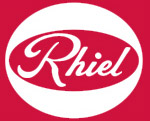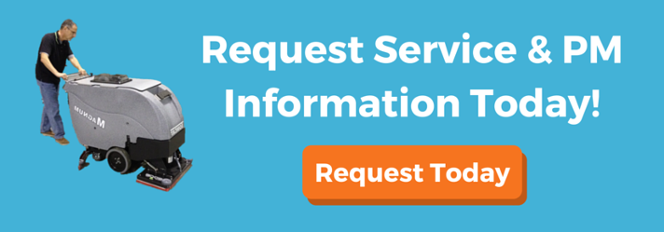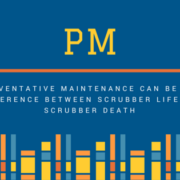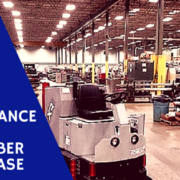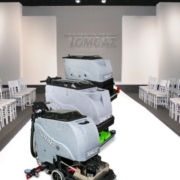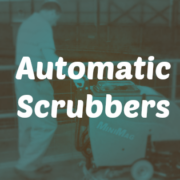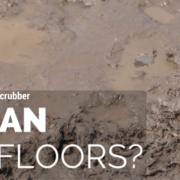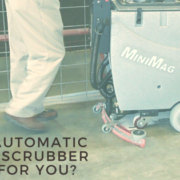My Scrubber is not Moving Forward or Backward
“My Scrubber is not moving forward or reverse. I’m not getting any running time”. This stays in the same theme as a series of posts I did a few months back that covered the most common automatic floor scrubber service requests we receive. To recap the first three
- I’m not getting any water on the floor.
- My scrubber is not picking up water the way it should
- My scrubber is not cleaning the floor properly or at least not the way it did when it was new.
So let’s take a look at why your automatic scrubber may not be moving forward or reverse or not providing the running time you would like to see.
Let’s rule out any mechanical issues. If your scrubber is not running at all it could be something as simple as a key switch, a malfunctioning solenoid or a bad wire connection. If you fix the switch and the machine works just fine we really don’t have an issue, just a broken part that needs replaced. Once we rule out any mechanical issues we get to the source of all power in an automatic scrubber; the batteries. Except for a very few types of scrubbers that plug into the wall for power and run on 110 Volt, AC current, almost all automatic scrubbers today operate on batteries. These batteries are deep cycle, 6 or 12 volt, wired in a series and provide either 24 volts or 36 volts of power for the scrubber. Here is where the problem usually lies. The batteries are the lifeblood of your automatic scrubber. They provide the power for the vacuum motor, power the brushes or scrubbing pads, the control valves that control water flow, the motors that lift the brushes, and the down pressure that is applied to the brushes or pads, sometimes lift the squeegee assembly, and move the machine forward and reverse. All these electrical components draw energy or amps from the batteries. If one of these is drawing too much current, we have a problem. Not only will drawing too much current reduce running time, it may also cause the particular motor to overheat causing premature failure. The battery charger may also be an issue. If it is not putting out the correct current to charge the batteries, the maximum running time will be limited.
Let’s take a look at these one at a time to determine what may be the problem.
Amp Draw:
An automatic scrubber may be able to perform at a high level but this all requires power. If your scrubber is being expected to scrub ramps, with maximum down pressure, and maximum water flow, the amp draw will be significantly higher than normal. This reduces running time. If you are using aggressive brushes on a textured floor surface you may get the cleaning results you want but the amp draw will increase and running time will drop. If you have clogs in your water recovery hoses, this can increase the amp draw in your vacuum motor. Debris caught in your brushes, banding or string wrapped around brushes can also make it harder for your brush motors to turn and increase amp draw. Make sure your auto scrubber is clean, and clear of all debris and you are using the appropriate pads or brushes for your application. This will help achieve longer running time.
Type of batteries:
Standard wet, deep cycle batteries are still the standard when it comes to good operation. If you have recently switched the type of batteries you are using, understand that running time may be affected. AGM or Gel batteries may have an impact on running time or longevity. I will cover this in a later blog. Just realize your machine running time depends on having the correct batteries.
Charging Batteries:
This may seem simple. Plug the battery charger into the automatic scrubber and into the wall outlet. Make sure it turns on, and walk away. Since most battery chargers today are fully automatic this usually works. The battery charger turns on and 6 to 8 hours later your batteries are at full capacity once again. This isn’t always the case as I have seen many times. Make sure the battery charger and the light switch are not on the same circuit. I have seen many times where the operator has plugged in the machine to charge, turned off the lights and left. However, if the light switch and the wall outlet are on the same circuit, the charger turns off when the lights turn off. The operator comes in the next day, turns on the lights, the battery charger comes on again and the scrubber is still charging. Everyone is perplexed as to why the machine isn’t charging and they have no running time. I have also seen instances where a company is having electrical work done. The electrical contractors shut the power off to do their work and the battery charger at the other end of the building turns off because of no power. The battery charger and the scrubber are then blamed for not working properly and I’m called for an unnecessary service call. In addition, when charging batteries, make sure the machine is in a well ventilated area.
Battery Charger:
If the batteries are not charging properly often it is the battery charger. Sometimes it is as simple as a bad fuse. Replace the fuse and the charger is ready to go. Make sure you use the appropriate fuse for the charger. It is often easy to mistake for a standard automotive fuse which will not work. They may look the same but the voltage is different. If it is more than that it is often simpler to replace to replace the entire charger.
Bad Batteries:
Finally, look at the batteries. If batteries are properly cared for, they should last several years and provide the appropriate running time for your scrubber. However even 1 bad cell in a battery can cause problems. Each cell in a battery is 2 Volts. Example, a 6 volt battery has 3 cells, each at 2 volts. A 36 volt system in an automatic scrubber may have 6 batteries, 6 volts each, each battery containing 3 cells. If one cell in one battery is bad, that drops the system to 34 volts to run the machine and that significantly reduces running time. If the scrubber continues to be run this way, it increases the chances another cell may go bad and the power supply is reduced by 2 volts with each bad cell. Eventually the machine will shut down completely and batteries will have to be replaced. To reduce the possibility of batteries going bad too soon follow these simple suggestions. Keep the batteries clean. Wipe off the batteries with a damp cloth after each use. Clean the battery posts to reduce buildup. Make sure the battery cables are tightly clamped onto the posts. Loose cables can cause arching and premature failure. Keep the batteries filled with distilled water. Check the battery levels every week and fill them to the appropriate fill line making sure the lead plates are completely covered. Fill the batteries after charging, not before. Charging raises the water level. If you fill the batteries before charging, the charging cycle may cause the batteries to overflow.
The most important factor is to purchase your automatic scrubber from a reliable, knowledgeable servicing distributor that can assist you with any concerns you may have about the operation or functioning of your scrubber. If you have questions or concerns about your scrubber please contact us anytime on our service and equipment request page. We will assist you in any way we can.
